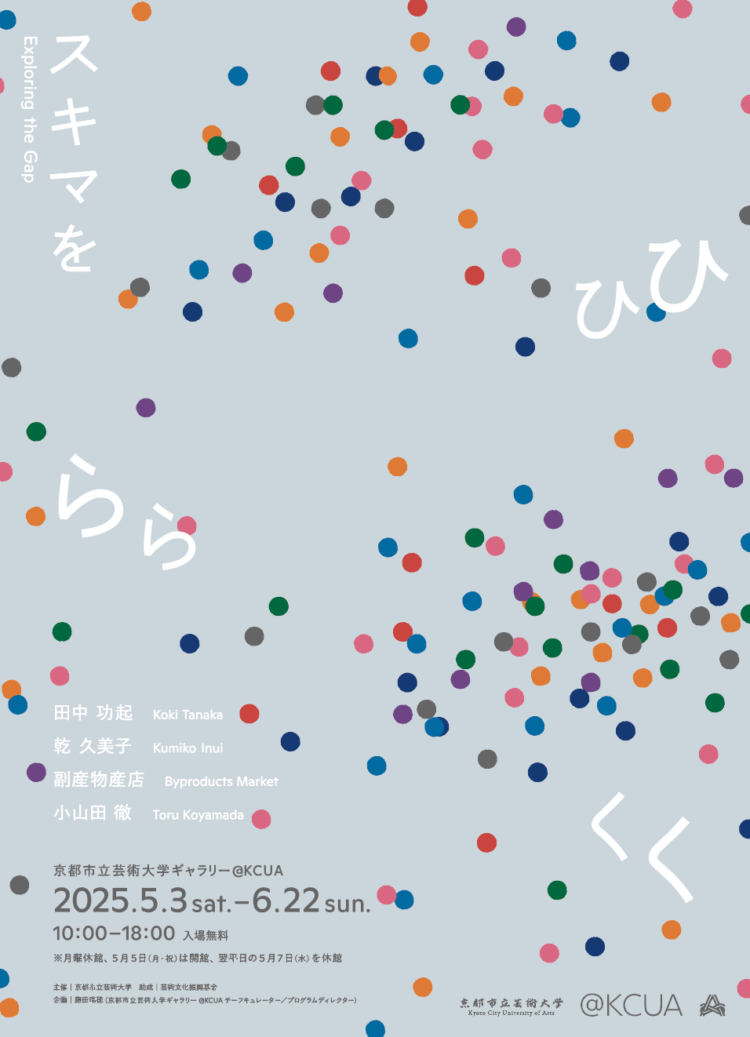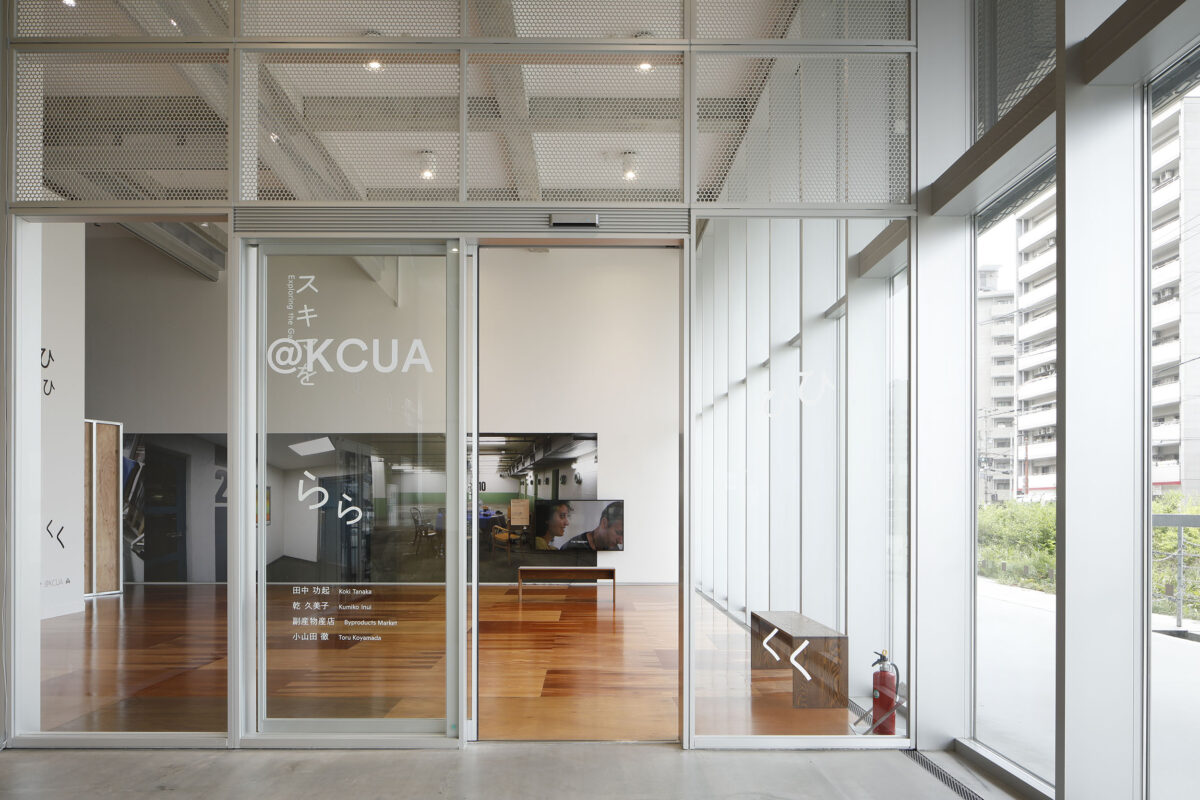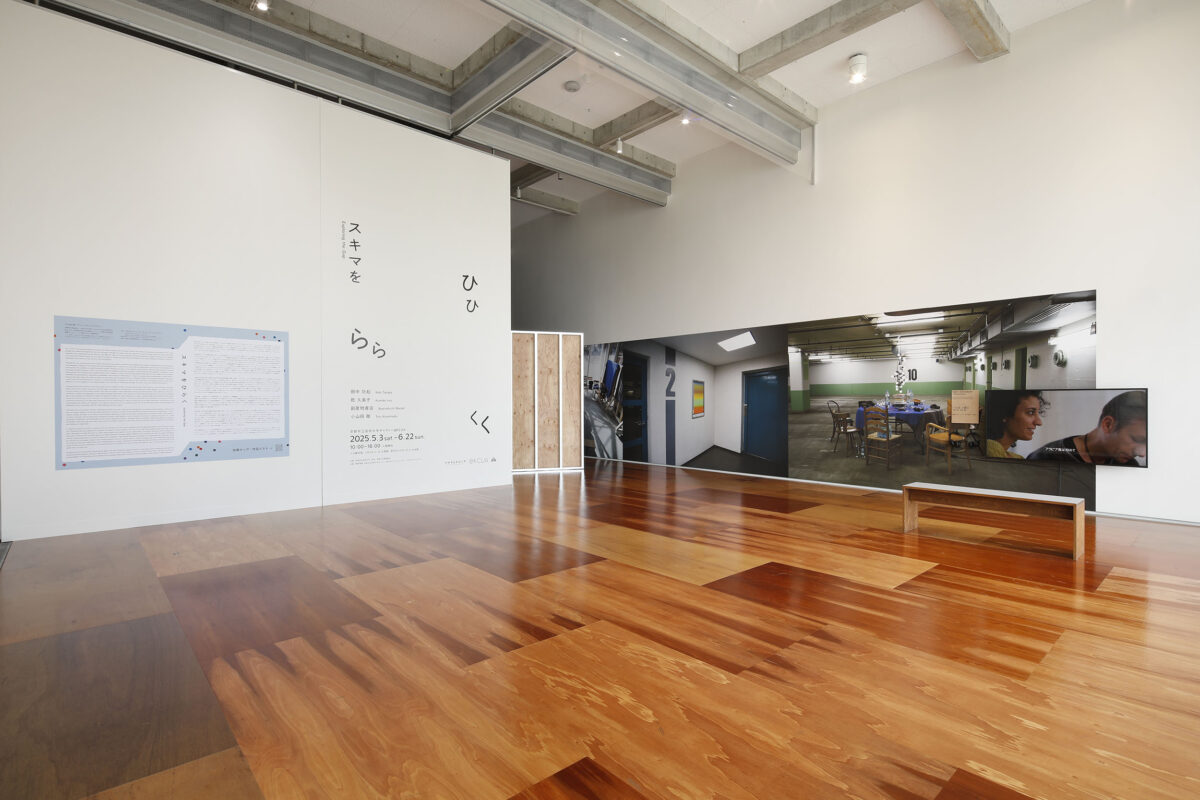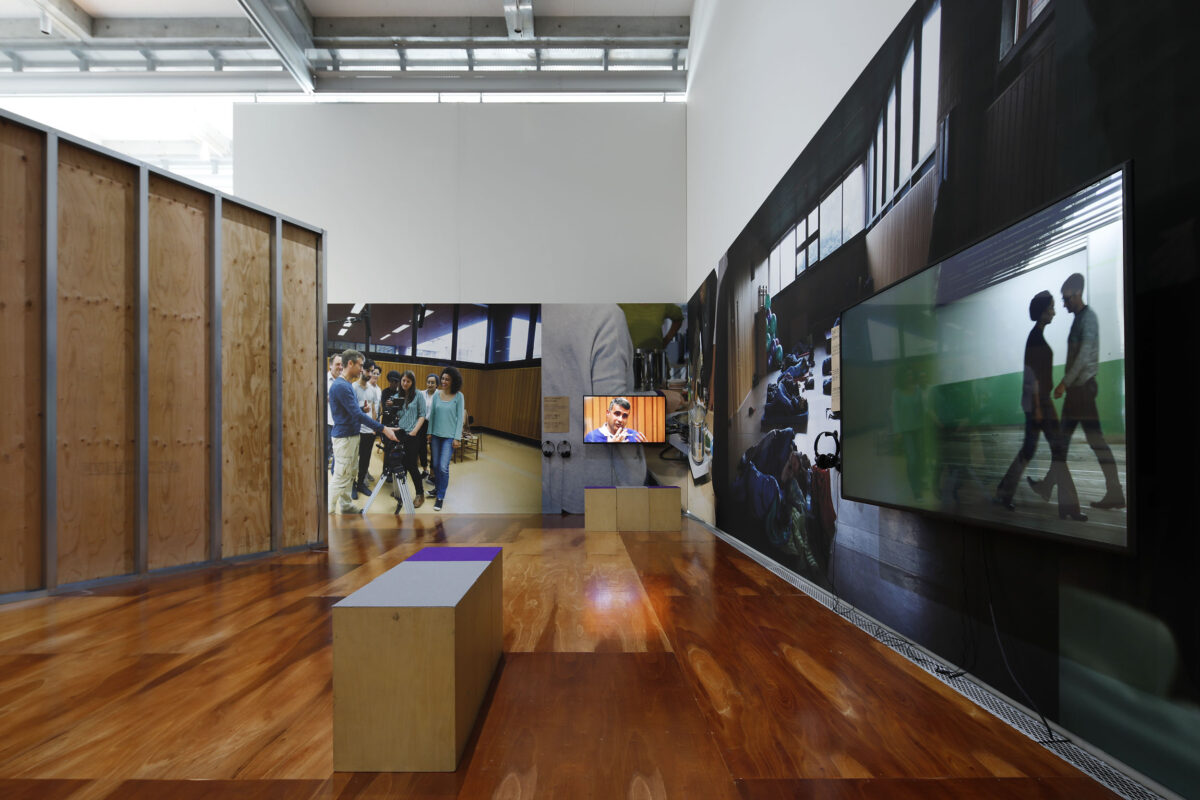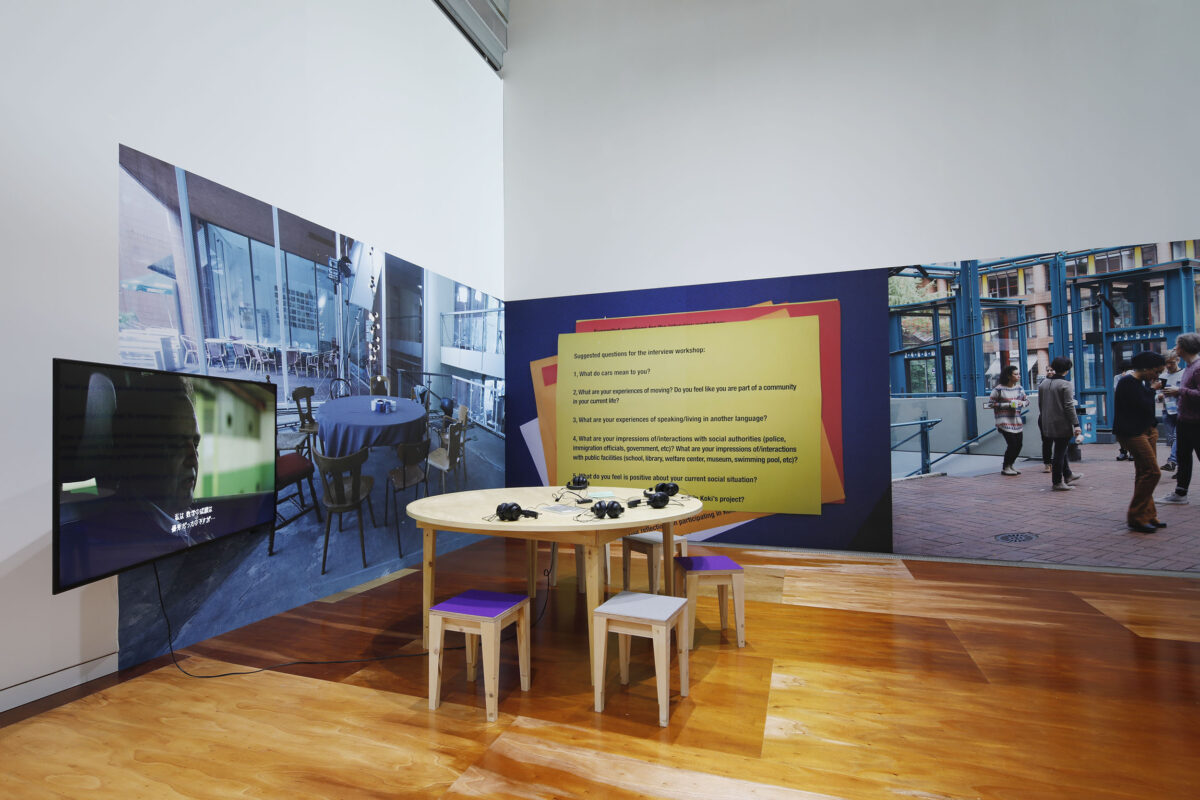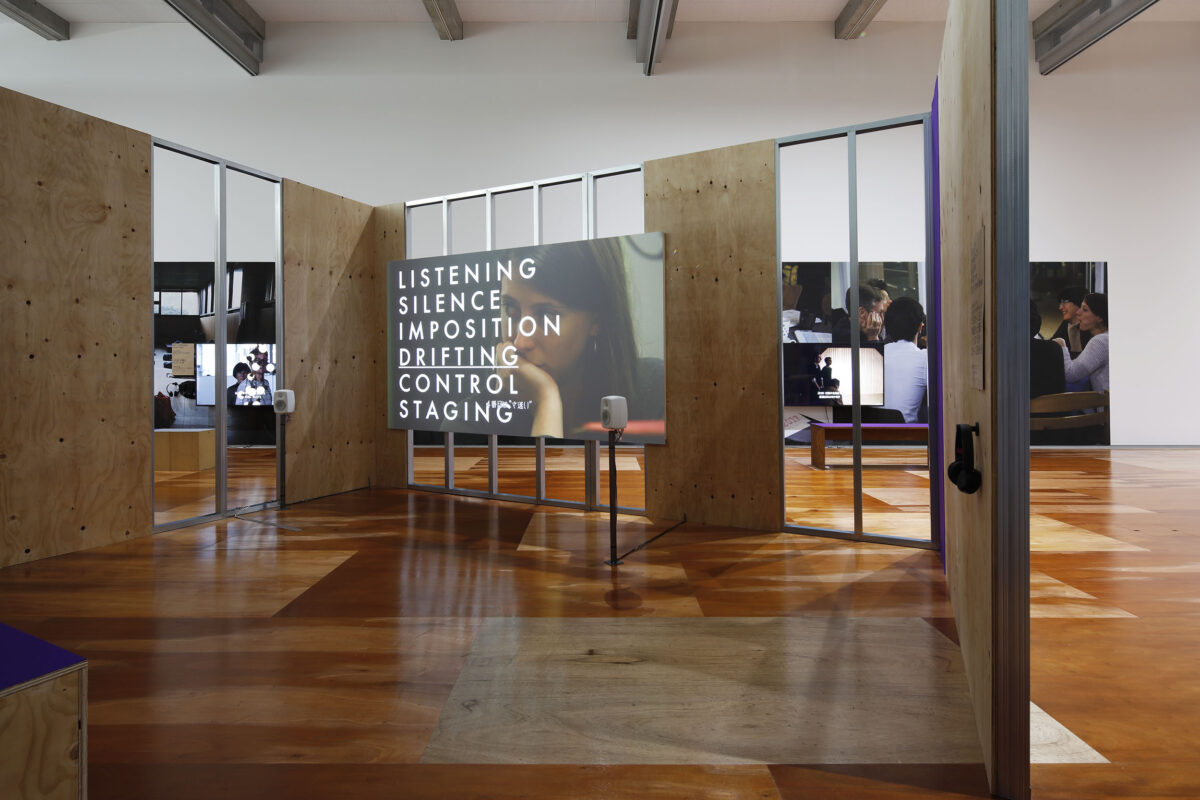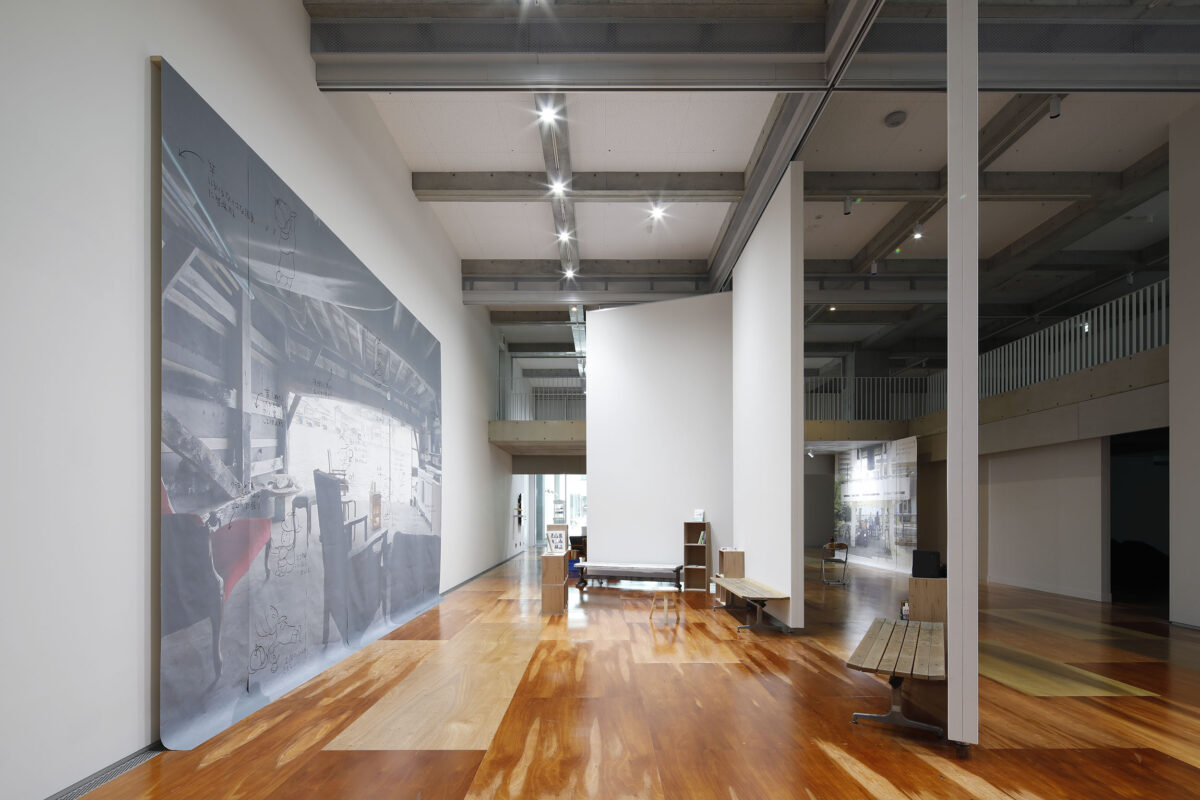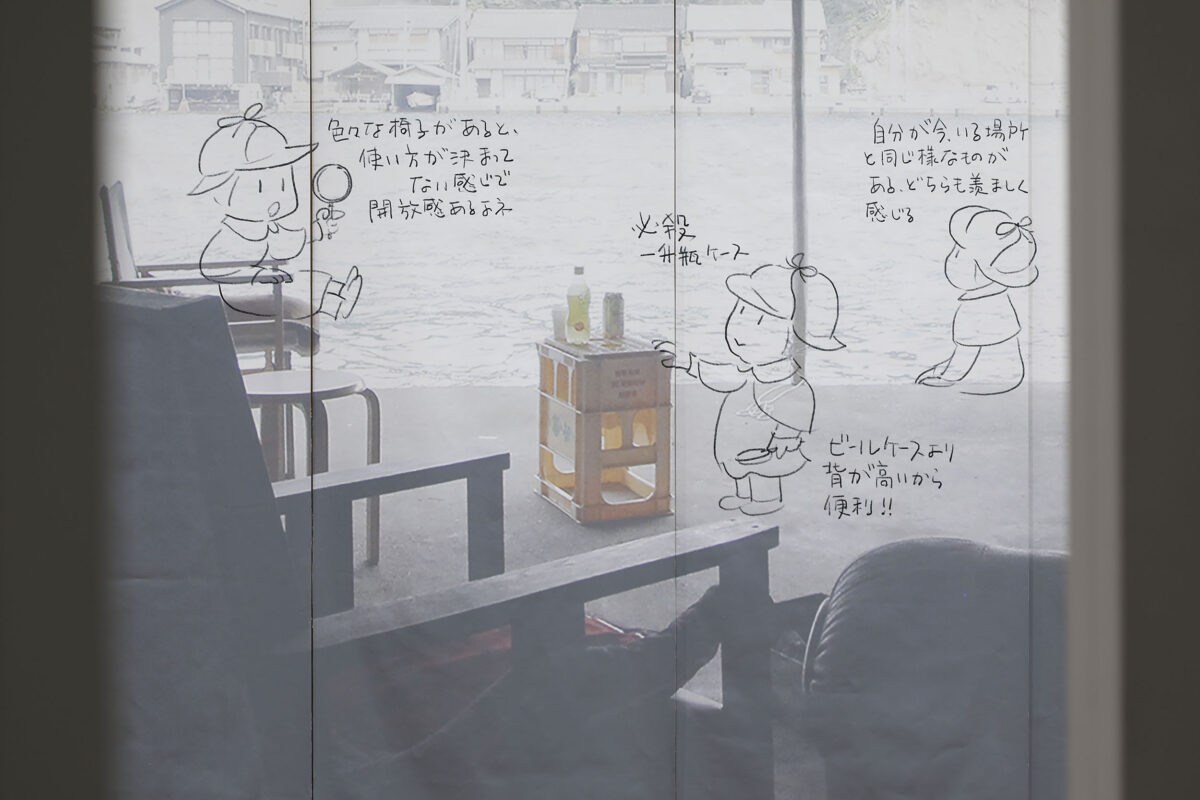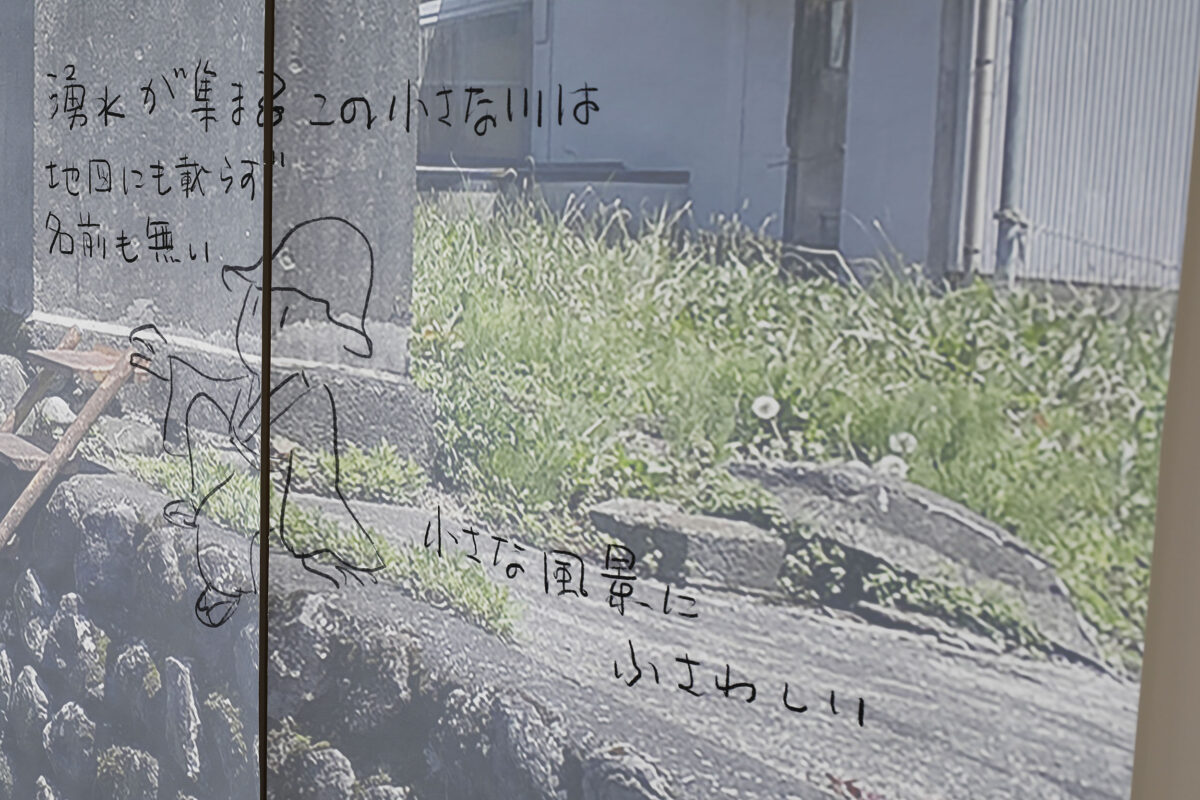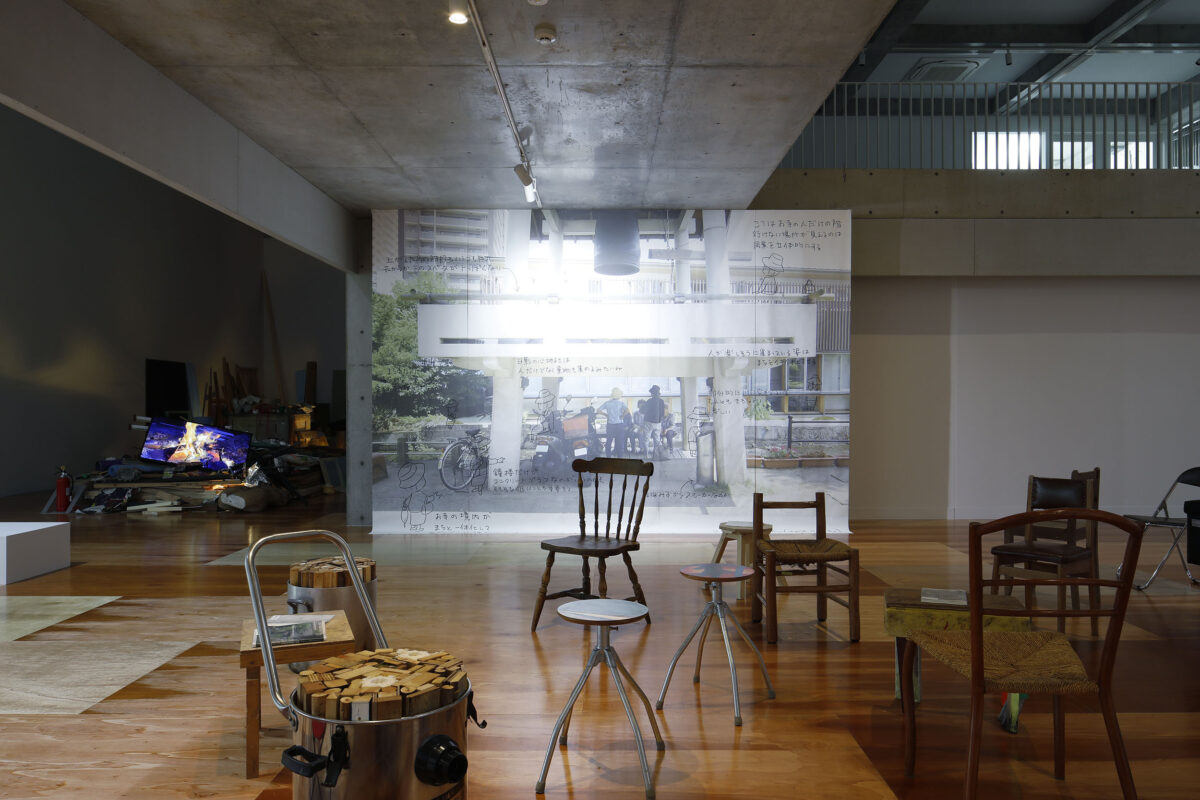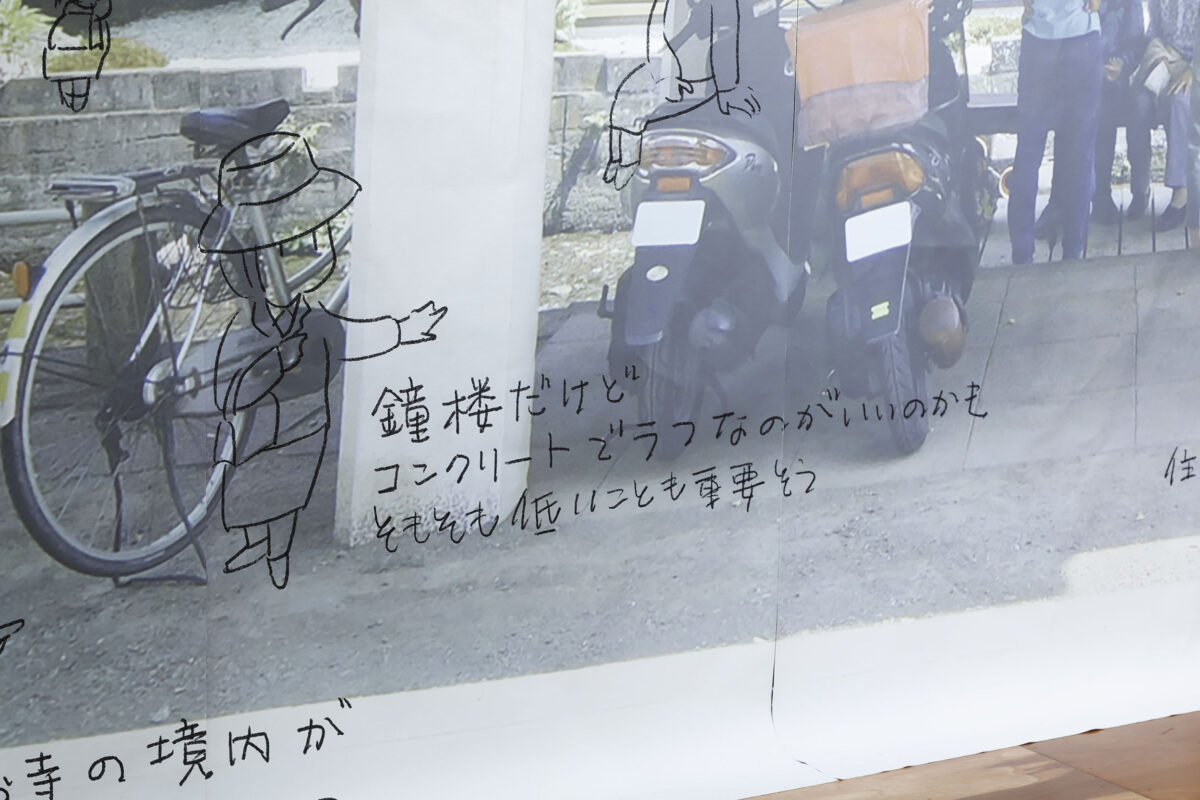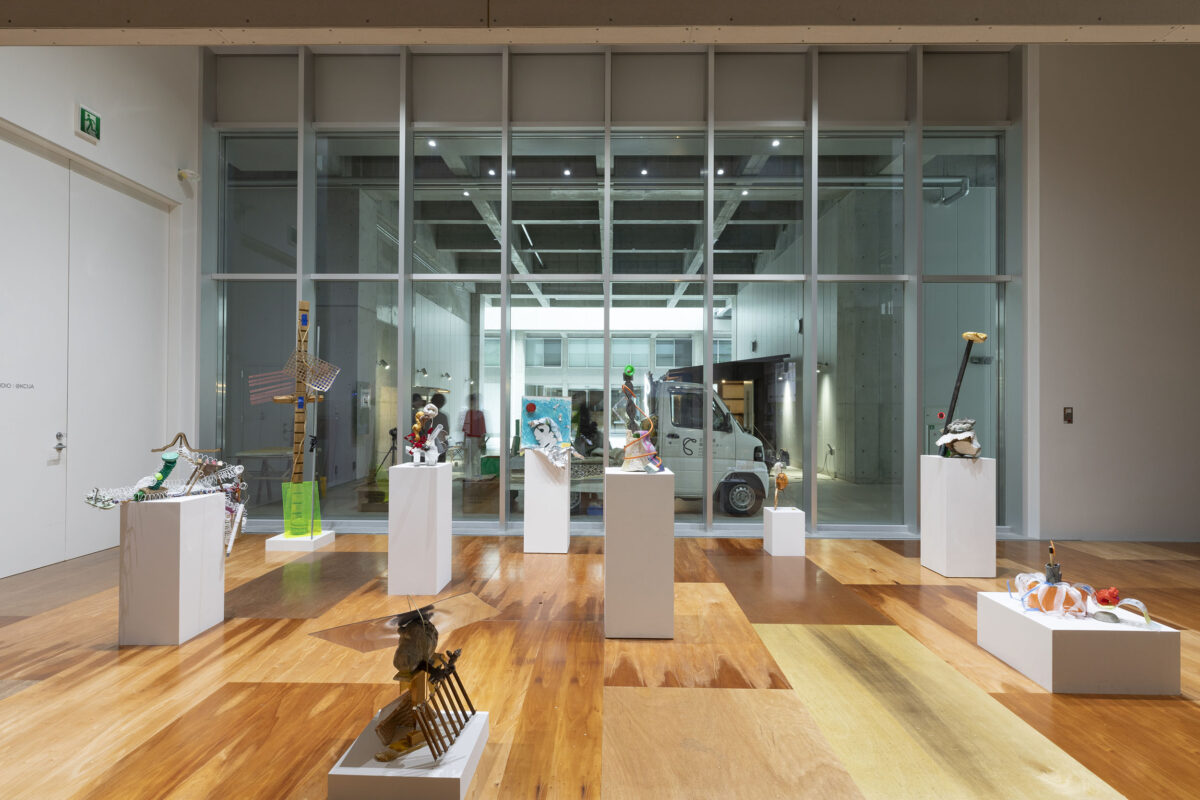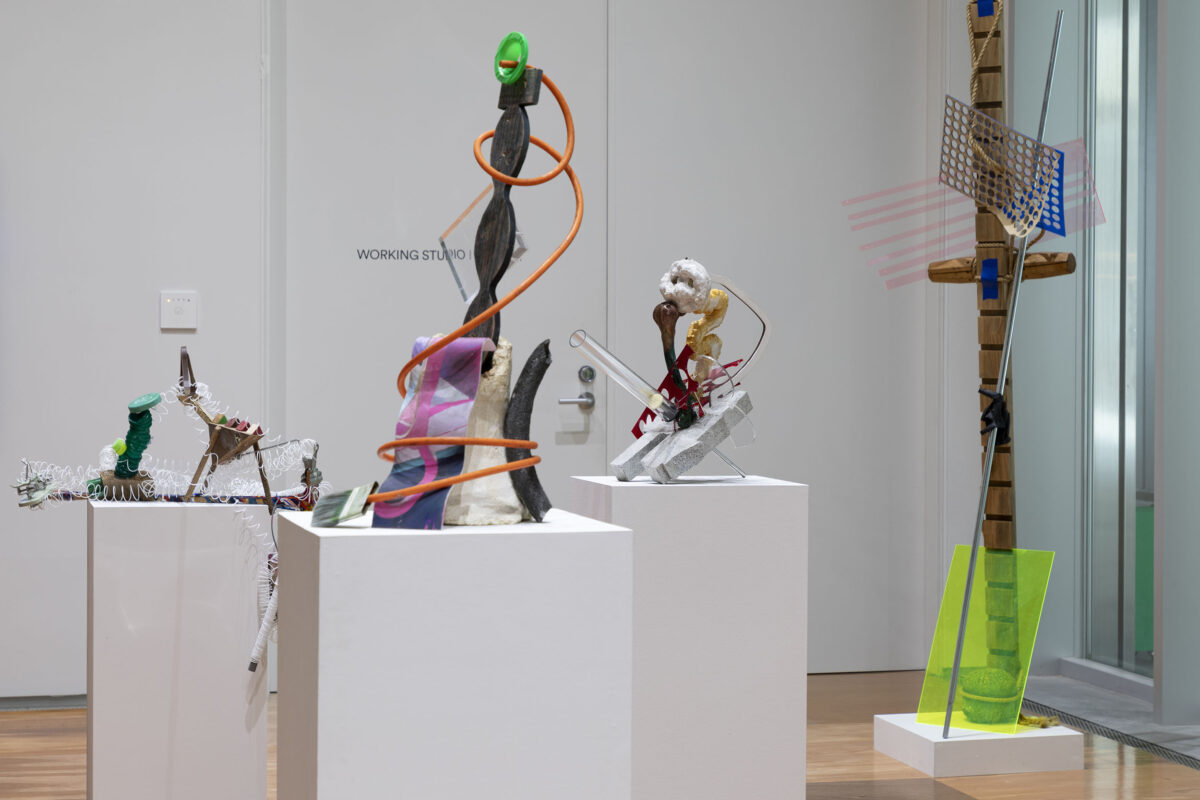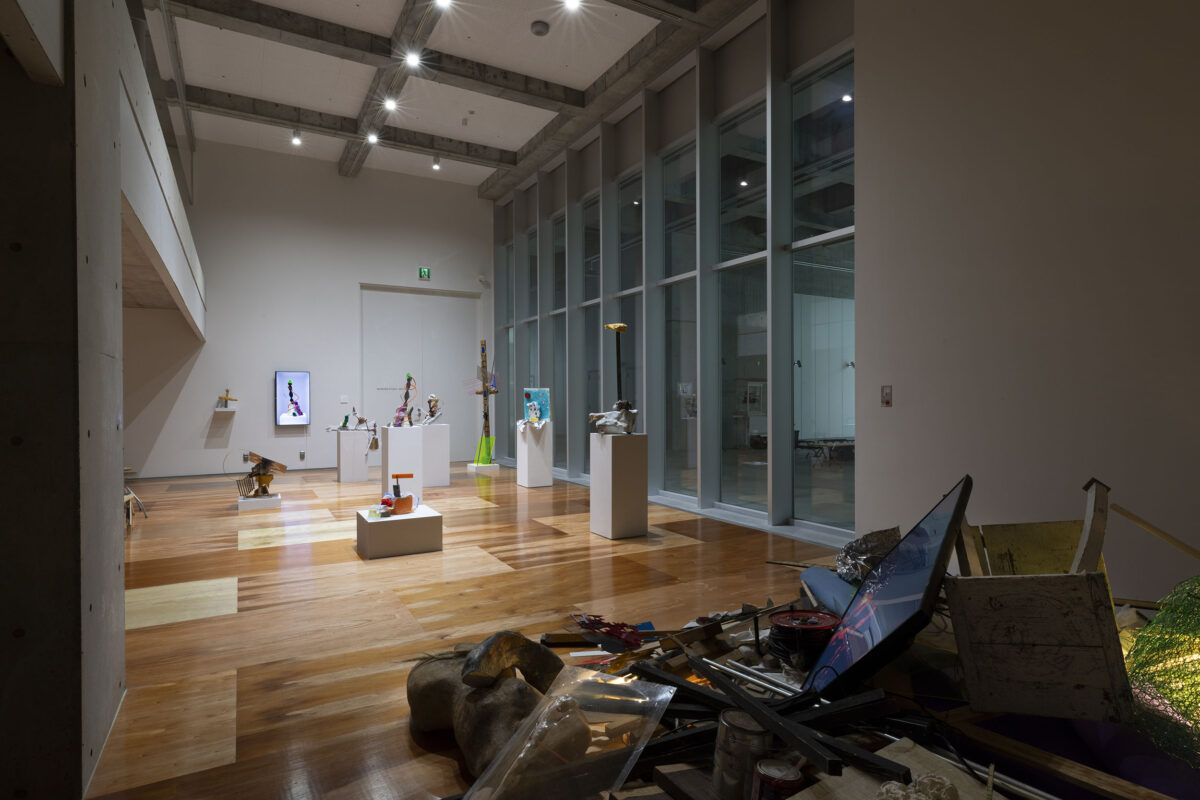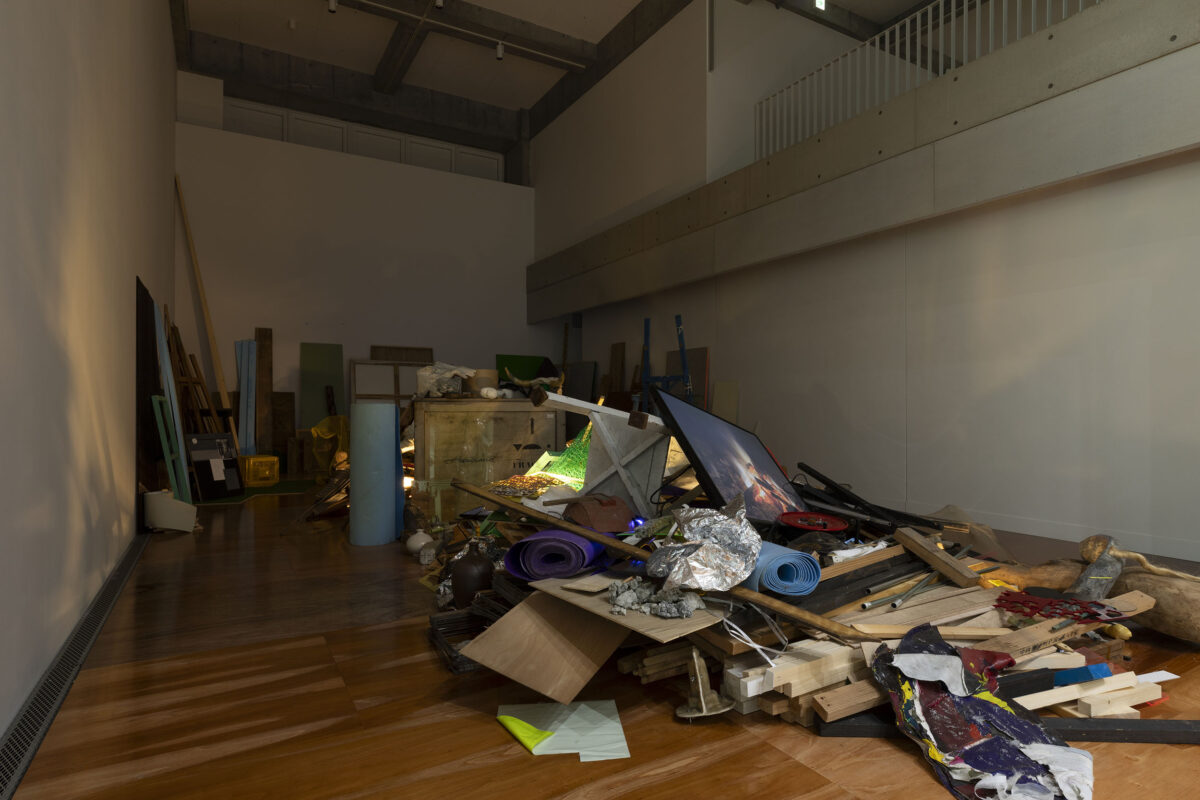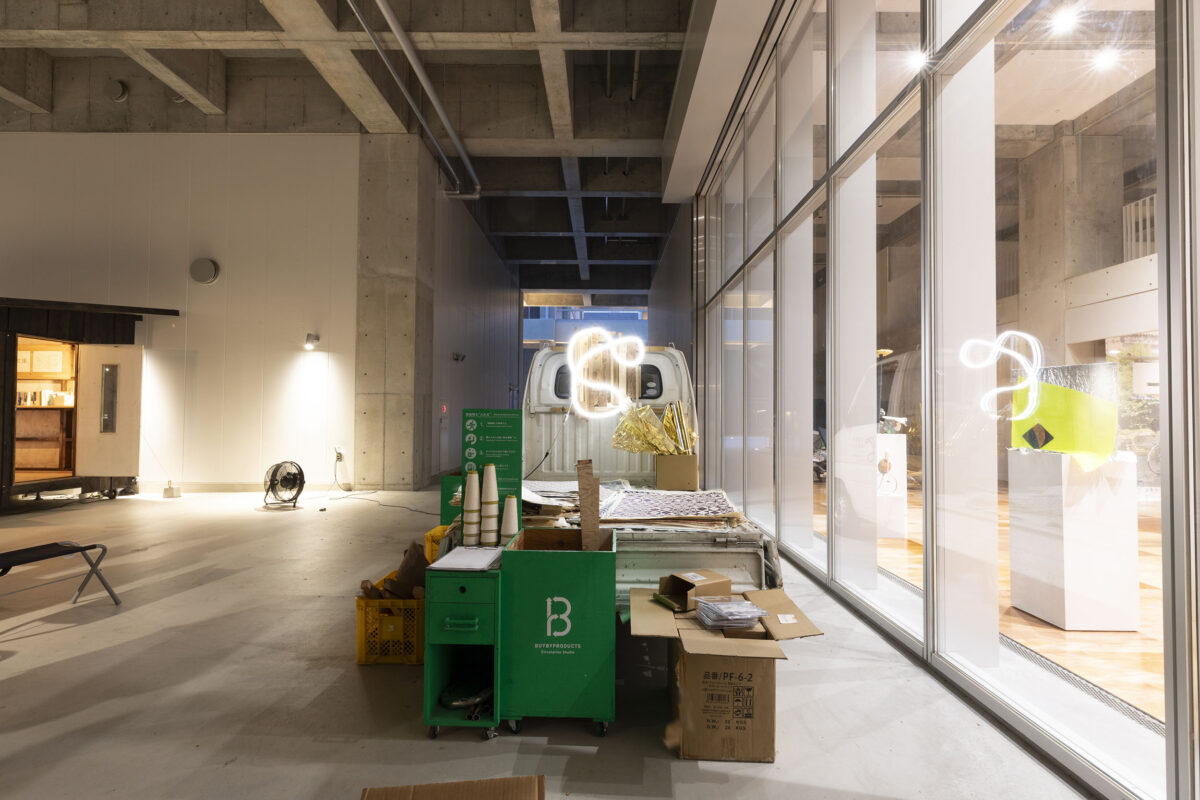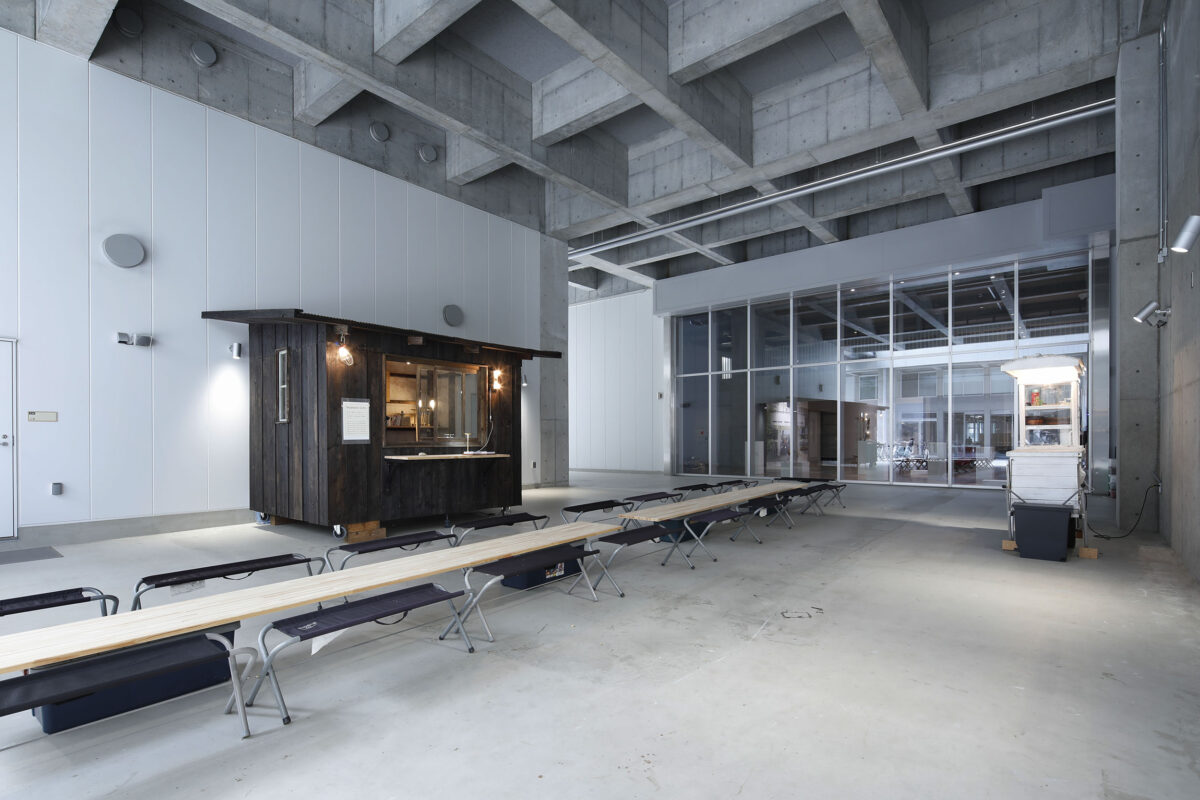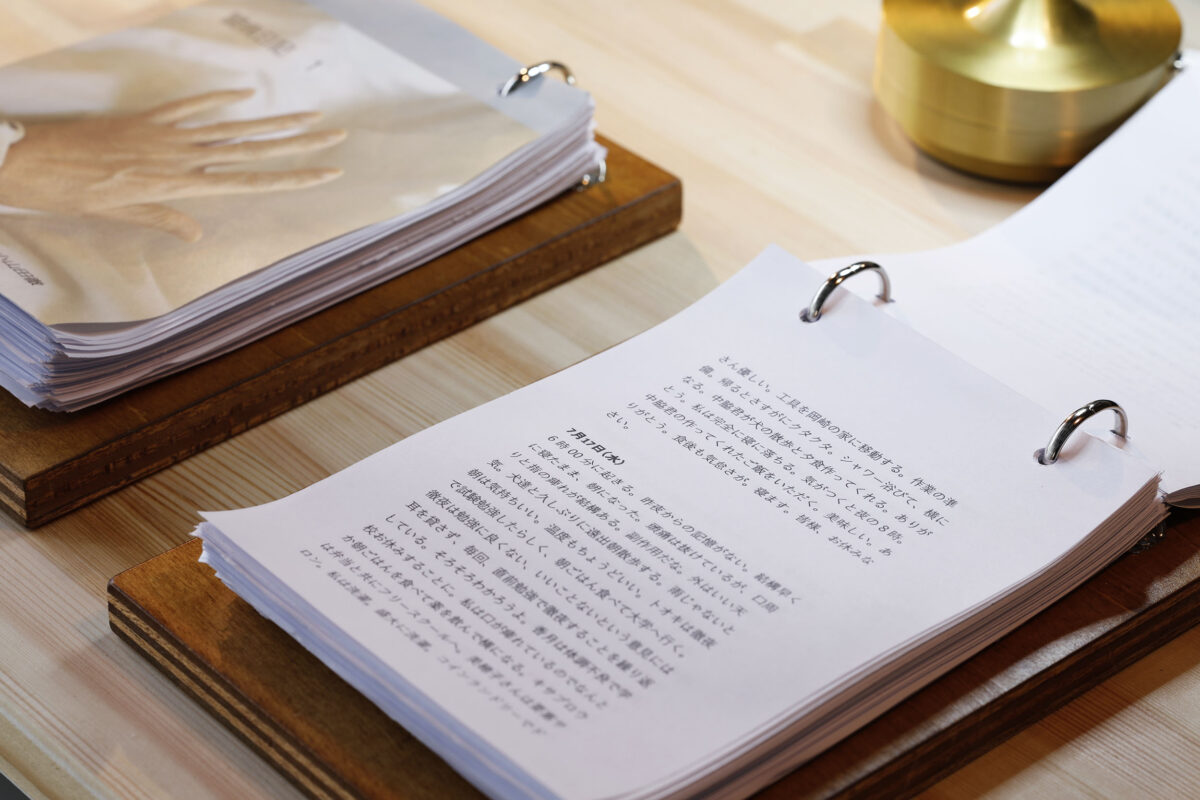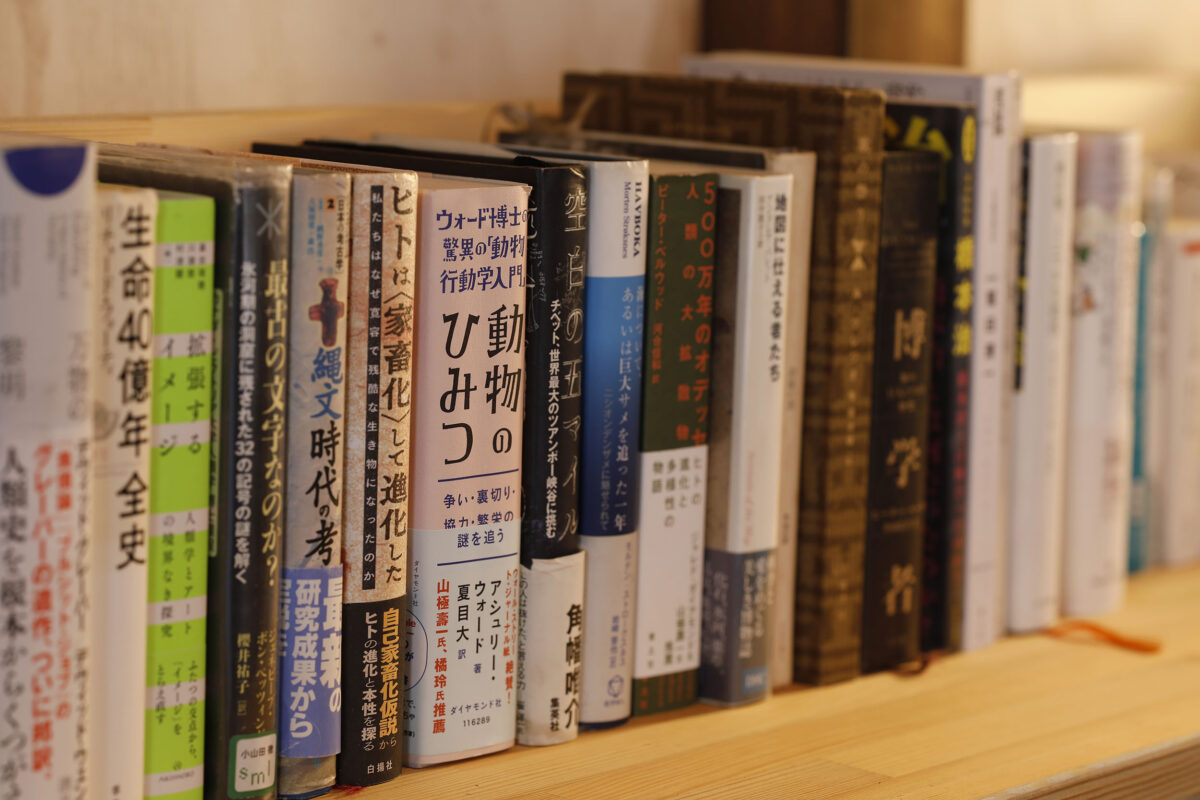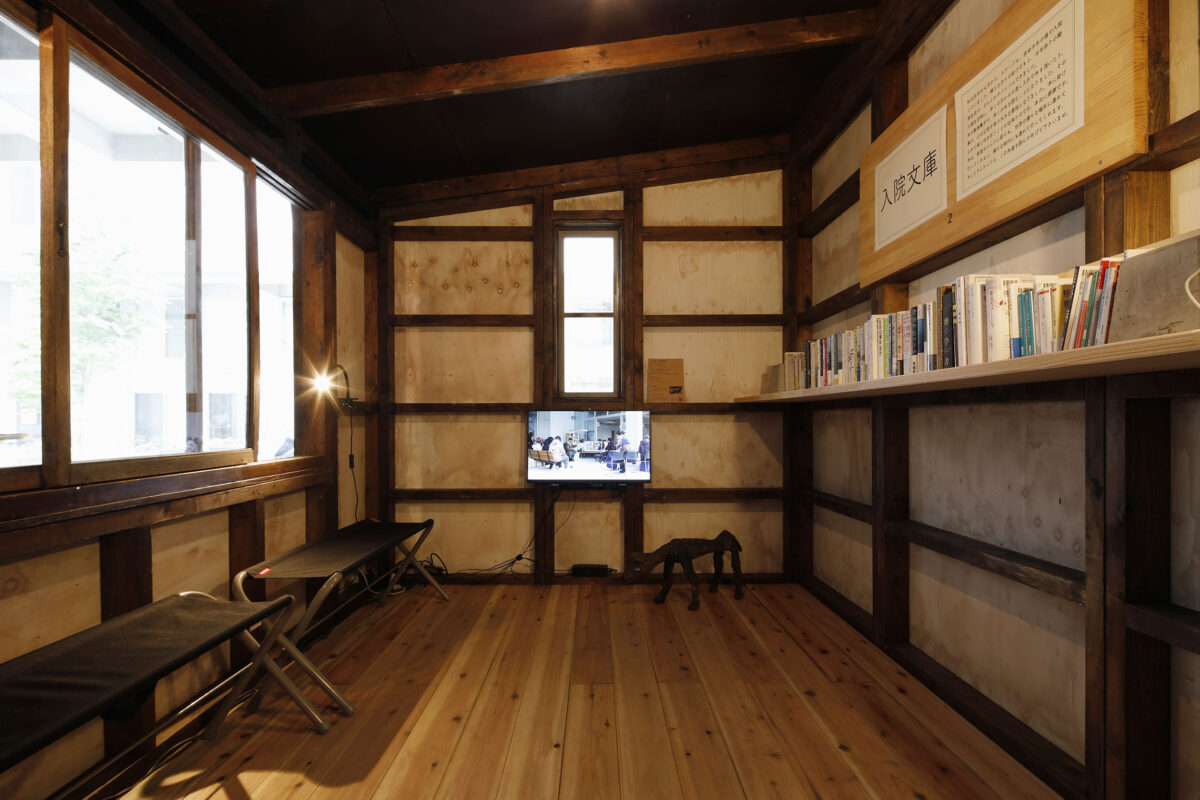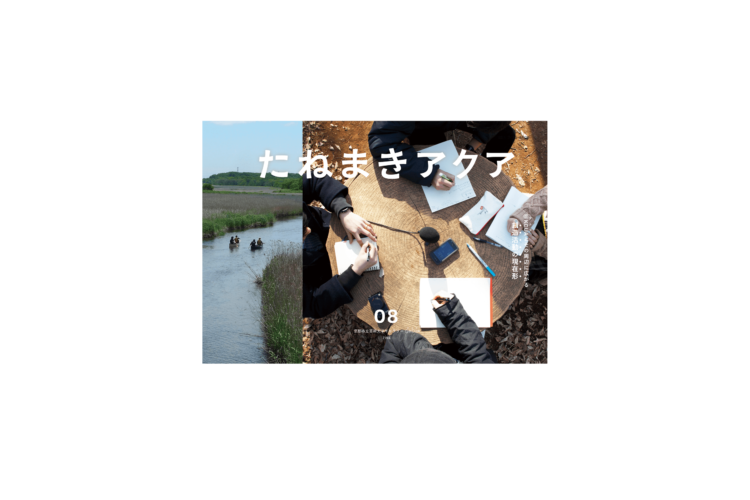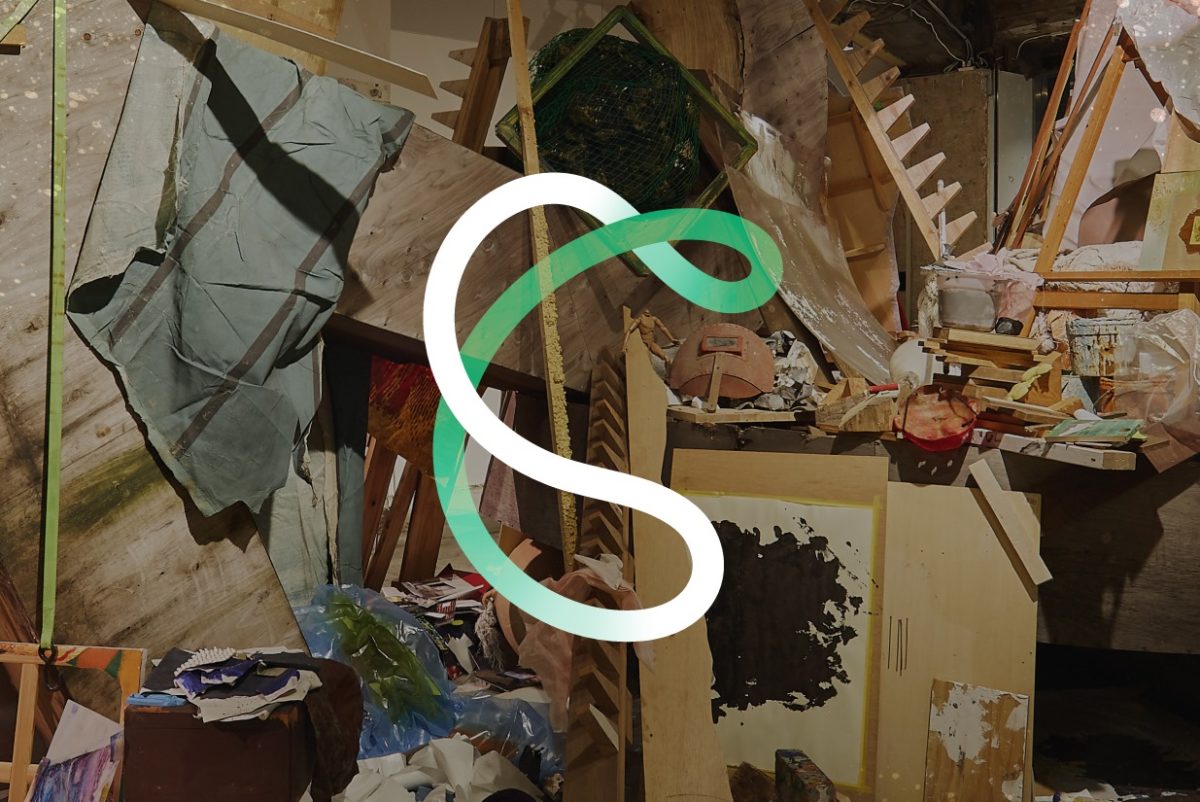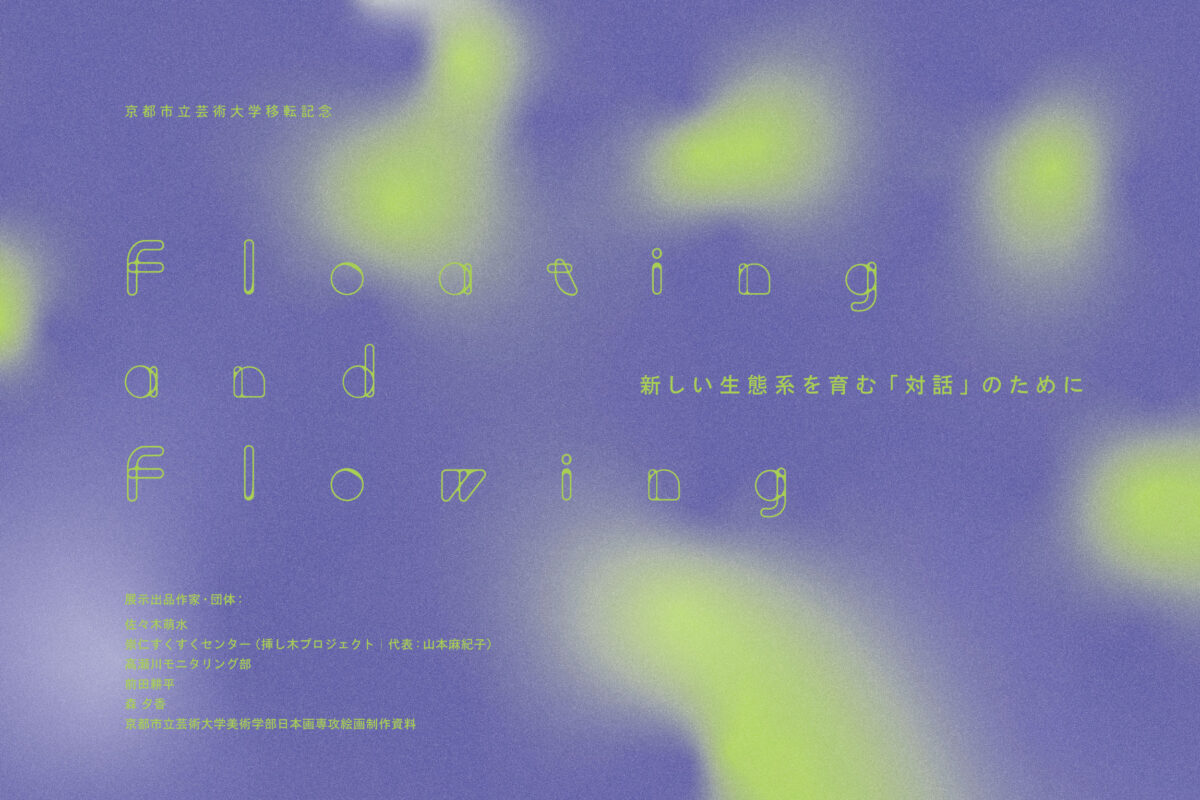SPECIAL EXHIBITIONS
Exploring the Gap
Our world is increasingly gripped by division and conflict, leaving what lies ahead unclear. Given these circumstances, what should we do so that people from different backgrounds and with divergent attitudes can compromise and coexist? The various changes ushered in during the COVID pandemic have accelerated social efficiency. But efficiency taken to excess gradually attenuates interpersonal relations. Aspiring to live together must start from sharing a place. We now need once again to consider the importance of learning from and acknowledging one another, of striving to understand each other over the course of time and dialogue.
Through the work and practices of four artists and groups, this exhibition explores the possibilities that unfold from people sharing a time and place, and engaging in dialogue. Koki Tanaka has long investigated what it means to live with others through projects that inquire into collaboration and communities. The exhibition includes Provisional Studies: Workshop #7 How To Live Together and Sharing the Unknown, which Tanaka first showed at Skulptur Projekte Münster in 2017. The work centers on footage documenting a nine-day workshop featuring local residents with different cultural backgrounds. The workshop was inspired by How to Live Together, a series of lectures that Roland Barthes gave at the Collège de France. Barthes identifies the possibilities of coexistence embedded in the concept of idiorrhythmy, a mode of living practiced by monasteries on Mount Athos in Greece, and which allows the monks to share the same space, yet still maintain their own individual rhythms. The workshop participants take part in various activities and discussions, overseen by several facilitators. Totaling more than four and a half hours, the footage conveys a sense of how difficult it is to live together. Is it actually possible to live with others? Watching the footage, the viewer once more confronts that question.
Architect Kumiko Inui, director of the joint project by five architecture firms to design the new Kyoto City University of Arts and Kyoto City Senior High School of Art campus, focuses on the little places encountered in everyday life or at work, the spots whose “designer” is unknown but which convey a sense of a living human warmth. She calls such places “small landscapes” and has documented them with collaborators through a voluminous number of photographs. In the small landscapes showcased in this exhibition, Inui finds daily learnings and the sources for something akin to the commons, for affection for place, for feelings of comfort, for shared sensations. In some, a commons appears and coexists within another commons. Commoning is this practice of creating temporary commons. Having accumulated such examples of everyday and local commons/commoning, Inui describes architecture not as something you make but which you put or place somewhere. That choice of verb encapsulates the thinking of a designer who regards architecture not as providing a space but as something that exists interrelationally with inhabitants, and in conjunction with the small landscapes that they create.
Yoshitaka Yazu and Tsuyoshi Yamada’s Byproducts Market is an artist collective that emerged from the research and development carried out for the new campus design. It treats the things destined to be thrown away like scrap materials from artistic production as “byproducts,” which it collects, utilizes, and sells. It is involved in various projects derived from these core activities, including the Arts Circulation Center, which aspires to circulate materials, and the Byproducts Orchestra Zombies, which performs with old musical instruments. In Exploring the Gap, Inui’s small landscapes “collaborate” and intermingle with the works of Byproducts Market, a deliberate blurring of exhibition areas that attempts to create new landscapes while examining what used to exist around the original materials as well as their uses, and allowing visitors to experience the circulation and utilization of byproducts.
A sculpture professor at KCUA’s Faculty of Fine Arts until the end of the previous academic year and appointed president of the university in April, Toru Koyamada has long explored the acquisition of shared or common spaces in his work. From a café where people casually gather like a house party taking place outside the home or a place where people come together around a small bonfire, such spaces create and cultivate dialogue and discussion. These are not “provided” places, but spaces beloved for bringing together different kinds of people, who make the spaces themselves without compromising their own rhythms. These too are examples of idiorrhythmic places of coexistence. For Exploring the Gap, Koyamada started by “placing” the hut-shaped sculpture work Floating Museum in the new campus. Playing a close yet changing role in the shared spaces Koyamada has made over the past roughly fifteen years, Floating Museum comprises restored and revived things that had served their purpose and were on the verge of becoming mere byproducts. On weekends during the exhibition, the venue will host the Weekend Café, a common space open to all to spend time in as they wish.
By opening up social interstices, shared spaces appear, and then through the people who gather in those places, social connections are formed. And temporarily being together constructs relationships in which we learn, acknowledge, and entrust things to others. What truly opens up the future and possibilities of living side by side is perhaps the accumulated, affectionate cultivation of those emergent common spaces in small landscapes.
(Translated by William Andrews)
- MORE
- Artists
- Byproducts MarketKumiko InuiToru KoyamadaKoki Tanaka
- Venue
- Kyoto City University of Arts Art Gallery
- Dates
- 2025.5.3 Sat.–2025.6.22 Sun.
- Organized by
- Kyoto City University of Arts
- With additional funding from
- Japan Arts Council
- Curated by
- Mizuho Fujita (Chief Curator/Program Director, KCUA Art Gallery)
- Contact
-
Kyoto City University of Arts Art Gallery
Phone: +81-(0)75-585-2010
Please send your inquiry from the form.
Installation Views
-
![]()
Koki Tanaka, Provisional Studies: Workshop #7 How To Live Together, And Sharing The Unknown, 2017. Photos by Takeru Koroda. -
![]()
-
![]()
Kumiko Inui, Learning from small landscapes, 2011–25. Photos by Takeru Koroda. -
![]()
-
![]()
Byproducts Market, Balance and Fixation, 2025. Photos by Kazuki Yoshimoto. -
![]()
-
![]()
Byproducts Market, Whereabouts of things, 2025. Photos by Kazuki Yoshimoto. -
![]()
-
![]()
Byproducts Market, The Mobile Art Circulation Center, 2024–25. Photos by Kazuki Yoshimoto -
![]()
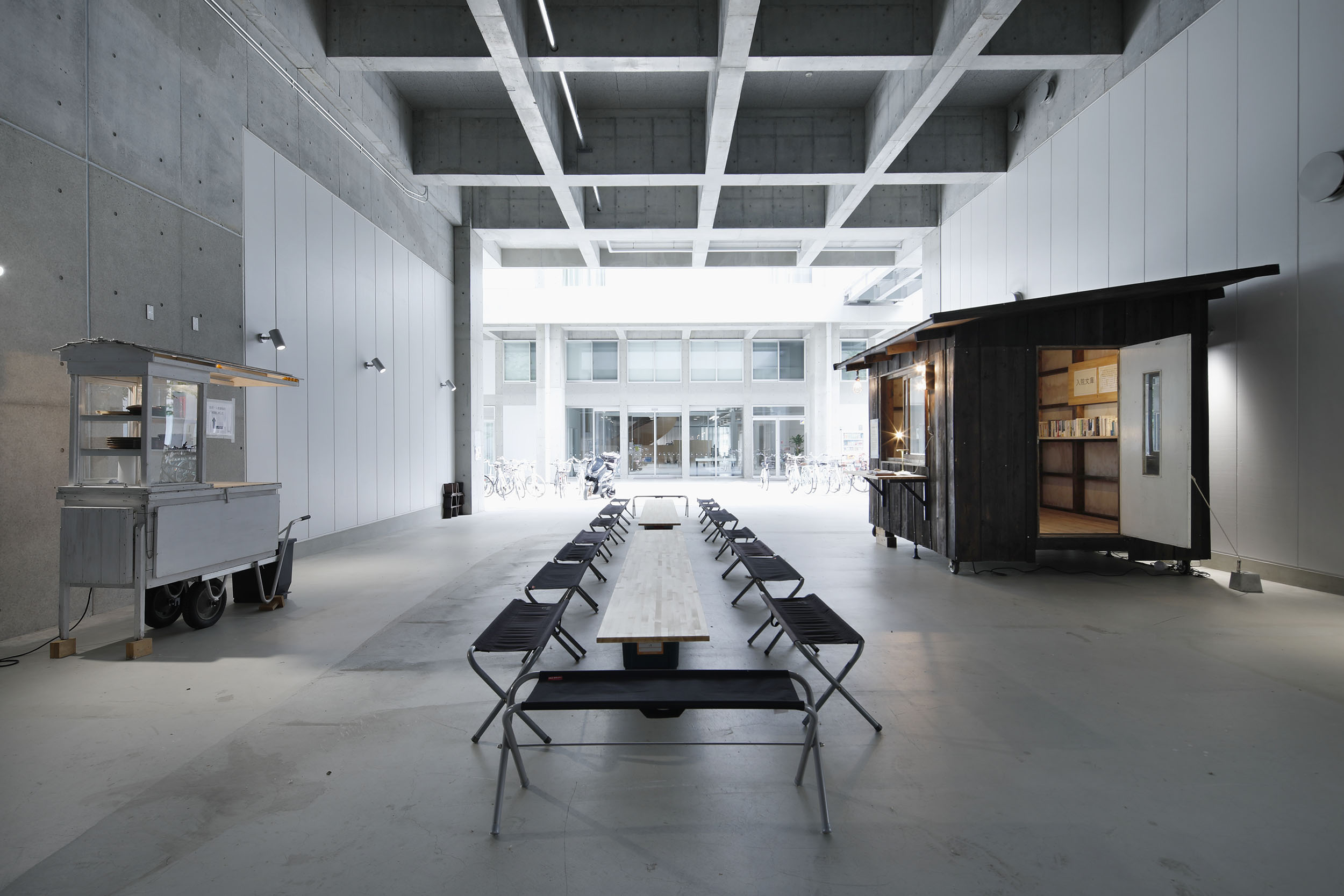
Videos
Filmed and Edited by Tatsuki Katayama
Artist Profiles
Artist Profiles
- Kumiko Inui
- Kumiko Inui is an architect, the director of Inui Architects, and a professor at the Yokohama National University Graduate School of Urban Innovation and Yokohama Graduate School of Architecture. Born in 1969 in Osaka Prefecture, Inui graduated with a degree in architecture from Tokyo National University of Fine Arts and Music (today, Tokyo University of the Arts) in 1992 and completed graduate studies in architecture at Yale University in 1996. From 1996 to 2000, she worked at Jun Aoki & Associates. From 2011 to 2016, she taught architecture at Tokyo University of the Arts, and then took up her current positions. Inui’s major designs include the Nobeoka Station Area Renovation Project (2020 Architectural Institute of Japan Prize for Best Work, 2020 Good Design Gold Award), Miyajimaguchi Ferry Terminal (2021 Japan Institute of Architects Award General Architecture Category Encouragement Prize), and Kyoto City University of Arts and Kyoto City Senior High School of Art (co-designer). Her recent work has focused on the importance of the commons in society, and on creating spaces and opportunities for commoning. In her practice, Inui explores the diverse potential of commons while harnessing her experience researching insights from what she calls “small landscapes.”
- Toru Koyamada
- Toru Koyamada is an artist and, since April 2025, president of Kyoto City University of Arts. Born in 1961 in Kagoshima City, he graduated with a degree in nihonga painting from KCUA in 1987. During his time as a student, Koyamada co-founded the performance group Dumb Type and contributed to such seminal works as pH and S/N, performed both in Japan and internationally. He has also worked with many people on issues related to AIDS and sexuality. From 1998, he left Dumb Type and started his solo practice. He taught sculpture at KCUA’s Faculty of Fine Arts from 2010 to 2025, when he was appointed president. Koyamada’s practice centers on obtaining shared spaces, searching for unique artistic methodologies to involve people in and experience those spaces. He creates places for gathering and interacting, such as bonfire sites, and seeks out new possibilities for social implementation inherent to such communal spaces. In 2005, Koyamada was awarded the 2nd Asahi Beer Award.
- Koki Tanaka
- Koki Tanaka is an artist and associate professor in concept and media planning at Kyoto City University of Arts. Born in 1975 in Tochigi Prefecture, his practice inquires into human collaboration and community, exploring what it means to live together through moving image and text. His recent output also encompasses writing and work that reinterprets art in terms of parenting and caregiving. His major exhibitions include the Aichi Triennale 2019, Skulptur Projekte Münster 2017, and Venice Biennale 2017 and 2013. Tanaka was named the Deutsche Bank Artist of the Year in 2015 and received a Special Mention for his work in the Japan Pavilion at the 2013 Venice Biennale. His major publications include Reflective Notes (Recent Writings) (Art Sonje Center and Bijutsu Shuppansha, 2020/21), Vulnerable Histories (An Archive) (JRP|Ringier, 2018), Precarious Practice (Hatje Cantz, 2015), and Random Directions are Necessity (Musashino Art University Press, 2014). He took up his current post at KCUA in 2024.
- Byproducts Market
- Yoshitaka Yazu and Tsuyoshi Yamada’s Byproducts Market is a recycling project that collects and sells waste materials from artist studios, which it treats as the titular byproducts of artistic practice. The project started in 2017, developing out of research carried out by Yazu and Yamada on the circulation of materials and artworks as part of a proposal related to the relocation of Kyoto City University of Arts to a new campus. By highlighting the secondary results of the art-making process and which are usually destined to be thrown away or left in some corner of the studio, Byproducts Market endeavors to facilitate opportunities to rethink the value and potential of things. Its major exhibitions include Absolute Chairs: The Representation of the Chair in Contemporary Art (Museum of Modern Art, Saitama, Aichi Prefecture Museum of Art, 2024), the solo show Byproducts Encyclopedia (Ogimachi Museum Cube, 2023), MIND TRAIL OKUYAMATO Museum In Your Mind (Nara, 2023), the solo show Art Circulation Center by Byproducts Market (KCUA Art Gallery, 2021), Kameoka KIRI Art Cultivation 2020, and Yambaru Art Festival 2019–20.


